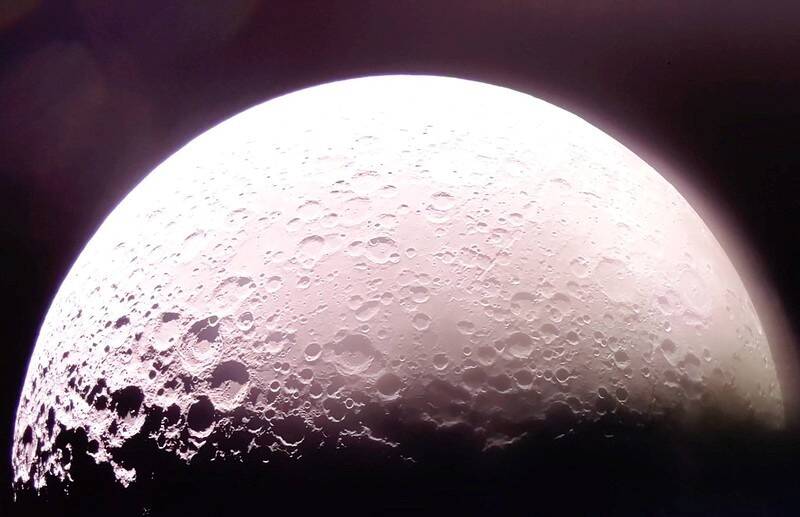Firefly Aerospace’s Blue Ghost 1 lunar lander has successfully entered orbit around the Moon, marking a significant step toward its scheduled landing attempt in early March. The company confirmed that the spacecraft executed a 4-minute, 15-second burn of its reaction control thrusters at 8:51 p.m. Eastern, completing its Lunar Orbit Insertion maneuver.

While in lunar orbit, Firefly’s Blue Ghost lander captured an image of the Moon’s south pole on the far left. Image: Firefly Aerospace
While Firefly has not disclosed exact orbital parameters, amateur radio trackers estimate the spacecraft is in an elliptical orbit ranging from 150 kilometers to 5,673 kilometers above the Moon. The lander will perform additional maneuvers in the coming days to transition into a circular orbit in preparation for its March 2 landing at 3:45 a.m. Eastern near Mare Crisium.
The NASA-funded mission, part of the agency’s Commercial Lunar Payload Services (CLPS) program, carries 10 scientific instruments designed to study the Moon’s surface and environment. Among them is the Lunar Instrumentation for Subsurface Thermal Exploration with Rapidity (LISTER), which will drill 2-3 meters below the surface to measure heat flow, and the Stereo Cameras for Lunar Plume-Surface Studies (SCALPSS), which will analyze the lander’s exhaust plume at touchdown.
“This is an incredible moment for our team,” said Brigette Oakes, Firefly’s Vice President of Engineering. “The energy and excitement around this mission are at an entirely new level.”

Firefly Aerospace released this image Feb. 14 of its Blue Ghost 1 spacecraft in orbit around the moon. Credit: Firefly Aerospace
ispace’s Resilience Lander Completes Lunar Flyby
Blue Ghost 1 launched January 15 aboard a SpaceX Falcon 9, sharing the ride with ispace’s Resilience lander, which is also headed for the Moon. Unlike Firefly’s lander, Resilience performed a lunar flyby on February 14, passing 8,400 kilometers above the surface at 5:43 p.m. Eastern.
Resilience is following a low-energy trajectory, traveling as far as 1.1 million kilometers from Earth before looping back for a May lunar orbit insertion burn. It will then attempt a landing in the Mare Frigoris region, though ispace has not revealed an exact date.
“I feel very confident in the Resilience lander,” said Takeshi Hakamada, ispace’s Founder and CEO. “Our team has prepared meticulously for this mission, and the successful lunar flyby is a major milestone.”
A Competitive Lunar Landscape
Firefly and ispace are among several commercial companies racing to the Moon. Intuitive Machines is preparing for a February 26 launch of its IM-2 lunar lander, which will take a more direct route, targeting a March 6 landing in the Mons Mouton region near the Moon’s south pole.
With multiple missions underway, the next few months could see multiple commercial landers operating on the lunar surface simultaneously, a historic first in the new era of private-sector lunar exploration.


Add comment
Comments